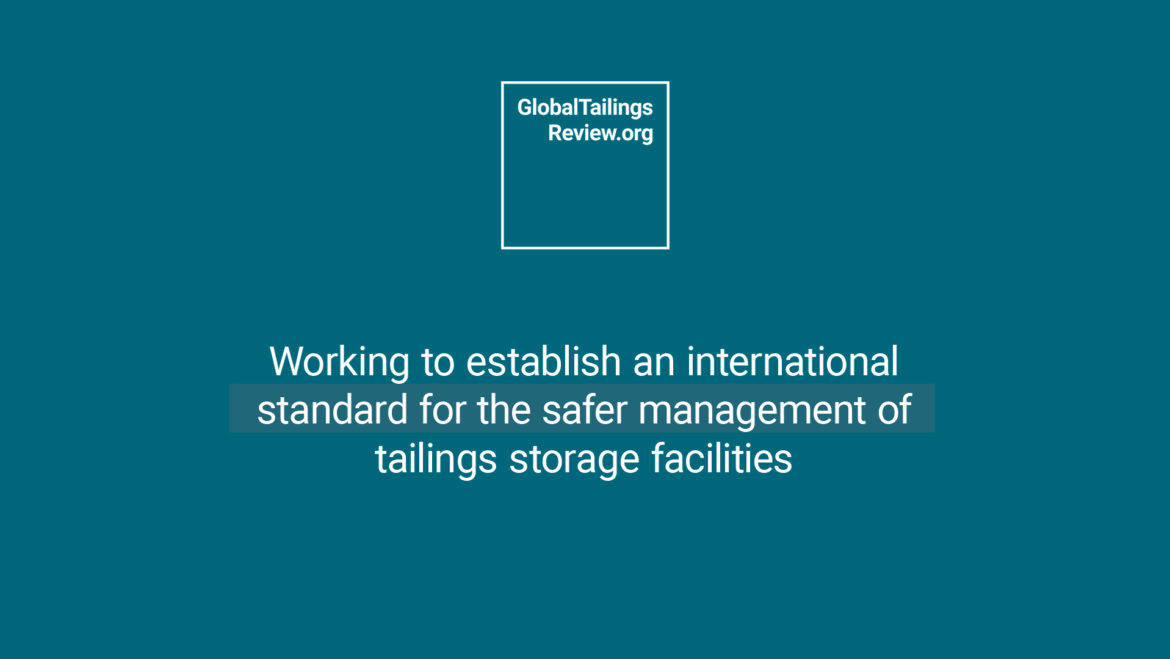Bruno Oberle
In January 2019, a tailings dam near the town of Brumadinho in south-eastern Brazil collapsed. Mining waste — or tailings — rapidly flowed down a valley, claiming the lives of 248 people (with 22 individuals still missing) and causing widespread destruction.
Sadly, this was not the first time tailings have been released from the dams built to hold them, with devastating impact on the nearby communities and the natural environment. Nor was this the first time an event of this magnitude has happened in Brazil.
Following the disaster at Brumadinho, I was appointed chair of the Global Tailings Review convened by the International Council on Mining and Metals (ICMM), the UN Environment Programme (UNEP) and the Principles for Responsible Investment (PRI).
The Review is currently in the process of drafting a new international standard for the storage of tailings that, once implemented, will provide a far greater level of protection and peace of mind to the communities that live nearby.
As part of the initial research phase of the Review, I witnessed first hand the devastating impact of the most recent tailings tragedies, learned what constituted best practice and took the opportunity to engage with stakeholders affected by the disasters. These are important elements to help develop an evidence-based, fit-for-purpose standard that can be applied to the management of tailings storage facilities.
Our latest field visit took place this month in British Columbia, Canada, where in 2014 a tailings dam at the Mount Polley gold and copper mine failed, releasing its contents into nearby lakes and rivers, and devastating the area. Luckily there was no loss of life, but damage to the pristine environment are still felt today.
During my visit to BC, I saw how the environment around the Mount Polley disaster has been rehabilitated and how the tailings that are still present in Polley and Quesnel lakes are monitored. In a region that now has considerable expertise in what happens when tailings dams fail, I spoke with regulators about their approach to this challenging topic.
I spent time meeting the communities living in the shadow of tailings storage sites, who heard the “whoosh” of the tailings release at Mount Polley when it failed.
I met with some indigenous people of BC, members of the First Nations who have a large copper mine operating within their traditional territory. They told me how important the natural environment was to their culture and how if they could no longer walk the trails or fish salmon from the creeks, as happened following the Mount Polley disaster, their way of life would be impaired along with the wildlife and environment that it depends upon.
These people need to believe the mining industry has in place the measures needed to keep them safe, and the mining industry must earn this trust through action and, critically, through communication.
The next step in the Global Tailings Review is to begin the global public consultation phase on its draft standard to allow for many diverse perspectives to be included in its development. We expect the consultation to take place in the final quarter of 2019, and the final standard and recommendation report to be published early in 2020.
Once the review and standard are completed, it will become a commitment of ICMM members. But there are more than 3,500 active tailings dams globally and we hope these initial commitments will influence broader uptake of the standard across the rest of the industry.
This will require the support of the other two co-convenors of the Global Tailings Review, UNEP and PRI, coupled with advocacy from others with an interest in improving the safety of tailings storage facilities.
I have seen first hand how regulators responded in force to past events to enhance their oversight of mines with such facilities, and I believe the international standard, when completed, will provide both the mining industry, governments and investors with a set of clear rules that will bring about safer management of tailings.
First published by The Financial Times on 19 September 2019.




